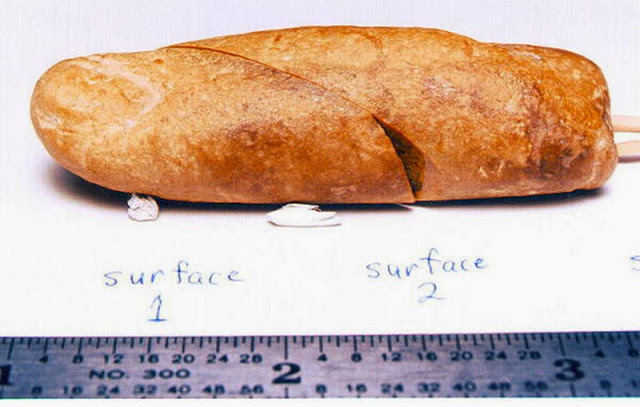A new Scientific Reports study proposes an extension of the electron Born self-energy (eBse) model, unveiling a mechanism for cosmic inflation driven by a constant potential energy density, thereby challenging the conventional cosmological paradigm. …read more […]
|
|
||
|
NASA on Monday announced it had used a state-of-the-art laser communication system on a spaceship 19 million miles (31 million kilometers) away from Earth—to send a high-definition cat video. …read more […] Blue Origin said it would try again on Tuesday to launch a rocket and return to space for the first time in more than a year, after scrubbing a mission for last-minute technical reasons. …read more […] 
Many people believe that mainstream history is totally wrong. There are people who argue that we are being served “filtered information” and that many things regarding the distant past of mankind have been kept safe away from society. What if our History is all wrong? Legit finding or not, the alleged 100 million year old fossilized finger is one of those things that should not exist according to mainstream scientists. Numerous discoveries have been made in the last 50 years that suggest mankind has inhabited this planet much before mainstream science is telling us. Giant Footprints in Africa suggest that different species inhabited …read more […] The IceCube Neutrino Observatory, operated by the University of Wisconsin-Madison (UW-M), located at the Amundsen–Scott South Pole Station in Antarctica, is one of the most ambitious neutrino observatories in the world. Behind this observatory is the IceCube Collaboration, an international group of 300 physicists from 59 institutions in 14 countries. …read more […] Scientists and engineers at NASA’s Goddard Space Flight Center in Greenbelt, Maryland, have completed testing for BurstCube, a shoebox-sized spacecraft designed to study the universe’s most powerful explosions. Members of the team have also delivered the satellite to their partner Nanoracks (part of Voyager Space) in Houston, Texas, where it will be packed for launch. …read more […] The James Webb Space Telescope recently trained its sights on unusual and enigmatic Uranus, an ice giant that spins on its side. Webb captured this dynamic world with rings, moons, storms, and other atmospheric features—including a seasonal polar cap. The image expands upon a two-color version released earlier this year, adding additional wavelength coverage for a more detailed look. …read more […] Light sail technology is a fascinating concept and a step change in rocket propulsion. It may not be big and impressive like the Saturn V, the Space Shuttle or the new Starship rocket but when it comes to traveling among the stars, light sails could just be the answer. And what better material to build the sails from then something that just makes me want to say it over and over again: photonics crystals. It sounds right out of a “Star Trek” episode, but a new paper examines their feasibility. …read more […] The construction of the European Southern Observatory’s Extremely Large Telescope (ESO’s ELT) has reached an important milestone with the delivery to ESO and shipment to Chile of the first 18 segments of the telescope’s main mirror (M1). Once they arrive in Chile, the segments will be transported to the ELT Technical Facility at ESO’s Paranal Observatory in the country’s Atacama Desert, where they will be coated in preparation for their future installation on the telescope’s main structure. …read more […] The Saturnian moon Enceladus presents a unique opportunity in our solar system to search for evidence of life, given its habitable ocean and plume that deposits organic-bearing ocean material onto the surface. …read more […] The way astronomers study planets in our own solar system is surprisingly similar to the way they study exoplanets, despite the latter being orders of magnitude more distant. The key is spectroscopy—examining the wavelengths of light that reach a telescope from a planet’s atmosphere. Different molecules allow different wavelengths to pass through, creating unique patterns in the spectrum and giving scientists clues about the composition of an atmosphere. …read more […] The James Webb Space Telescope (JWST) is already making great strides in helping us to unravel the mysteries of the universe. Earlier this year, hundreds of rogue planets were discovered in the Orion Nebula. The real surprise to this discovery was that 9% of the planets were paired up in wide binary pairs. To understand how this binary planets formed, astronomers simulated various scenarios for their formation. …read more […] It’s a classic tale of apocalyptic fiction. The sun, our precious source of heat and light, collapses into a black hole. Or perhaps a stray black hole comes along and swallows it up. The End is Nigh! If a stellar-mass black hole swallowed our sun, then we’d only have about eight minutes before, as the kids say, it gets real. But suppose the sun swallowed a small primordial black hole? Then things get interesting, and that’s definitely worth a paper on the arXiv preprint server. …read more […] This NASA Hubble Space Telescope image features NGC 2814, an irregular galaxy that lies about 85 million light-years from Earth. In this image, which was captured using Hubble’s Advanced Camera for Surveys, the galaxy appears to be quite isolated: visually, it looks a little like a loose stroke of bright paint across a dark background. However, looks can be deceiving. …read more […] Nature Communications published research by an international team from Wits and ICFO- The Institute of Photonic Sciences, which demonstrates the teleportation-like transport of “patterns” of light—this is the first approach that can transport images across a network without physically sending the image and a crucial step towards realizing a quantum network for high-dimensional entangled states. …read more […] |
||
|
Copyright © 2025 Paranormal News Network - All Rights Reserved Powered by WordPress & Atahualpa 132 queries. 0.354 seconds. |
||
